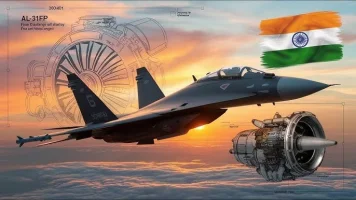- Views: 2K
- Replies: 19
Destroyers, known for their speed, agility, and powerful armaments, are crucial warships for protecting naval fleets and projecting maritime power. However, a current assessment of global naval strengths reveals a significant challenge for India.
As of late March 2025, India operates 13 destroyers, placing it numerically far behind the United States (81), China (50), and Japan (42), and tying it with South Korea (13).
The Indian Navy's destroyer force comprises four classes: the modern Visakhapatnam and Kolkata classes, the slightly older Delhi class, and the ageing Rajput class (originally Soviet-built).
While equipped with potent systems like the BrahMos supersonic cruise missile and Barak-8 surface-to-air missiles, the sheer quantity of these vessels raises concerns.
The comparison with Japan's 42 destroyers is particularly stark, highlighting a potential capability gap that requires urgent attention from Indian defence planners.
Leading Global Destroyer Fleets
Several nations maintain significantly larger and technologically advanced destroyer fleets:- United States: With 81 destroyers, primarily the versatile Arleigh Burke-class equipped with the advanced Aegis Combat System and 96 Vertical Launch System (VLS) cells, the U.S. Navy holds the top position globally, reflecting its extensive global commitments and industrial capacity.
- China: The People's Liberation Army Navy (PLAN) has rapidly grown its fleet to 50 destroyers. This includes the capable Type 052D and the large Type 055 vessels (classified by China as destroyers, though comparable to cruisers), featuring 64 and 112 VLS cells respectively. This expansion supports China's increasing maritime ambitions.
- Japan: The Japan Maritime Self-Defence Force (JMSDF) operates a sophisticated fleet of 42 destroyers. Key assets include Aegis-equipped vessels like the Maya and Atago classes (96 VLS cells), alongside other advanced destroyers focused on anti-submarine warfare and missile defence, primarily addressing regional security concerns.
- South Korea: Matching India with 13 destroyers, the Republic of Korea Navy includes the formidable Sejong the Great-class, which boasts Aegis systems and a high capacity of 128 VLS cells, making them among the most heavily armed destroyers globally.
The India-Japan Disparity and Regional Responsibilities
The difference between India's 13 destroyers and Japan's 42 is noteworthy, especially considering India's significantly longer coastline (approximately 7,516 km compared to Japan's 2,900 km) and its extensive strategic duties across the vital Indian Ocean Region (IOR). Japan's larger fleet stems from its long-standing focus on maritime defence capabilities, often developed in collaboration with the U.S., and potentially more streamlined procurement processes. Furthermore, many Japanese destroyers feature a higher number of VLS cells (often 96) compared to India's current frontline ships (32 VLS), indicating greater missile-carrying capacity.India's current destroyers, though increasingly indigenous in design and construction (Visakhapatnam, Kolkata, Delhi classes), are divided between the Western and Eastern Naval Commands. This deployment aims to address potential challenges from both Pakistan and China. The induction of the four Visakhapatnam-class ships (completed with INS Surat in early 2025) and the three Kolkata-class ships represents significant modernisation. However, the limited overall numbers and the presence of older vessels like the Rajput class (commissioned in the 1980s) underscore the numerical constraints on the fleet.
Project-18: A Glimmer of Hope Needing Scale
The Indian Navy's planned Project-18 Next Generation Destroyers (NGD), conceptualised by the Warship Design Bureau, represents a significant technological step forward.These planned vessels are expected to be large warships of around 13,000 tons, featuring advanced capabilities like integrated electric propulsion, a high VLS count (potentially 120-144 cells), and indigenous weapon systems.
However, current indications suggest an initial plan for only about six Project-18 destroyers. Construction is tentatively expected to begin around the end of this decade, with deliveries stretching from the mid-2030s onwards.
Building only six NGDs would bring India's total destroyer count (assuming retirement of the Rajput class) to around 19 – still considerably fewer than Japan's current fleet and far behind China's growing numbers. This limited scale risks failing to adequately address India's strategic requirements.
The Case for Expansion and Acceleration
Given the naval build-up by China and the existing disparity with Japan, defence analysts argue that Project-18 needs to be significantly scaled up, potentially to 18-24 ships. Such numbers would better align the fleet size with India's goal of being a primary security provider in the IOR.To ensure these future destroyers are world-class, incorporating planned advancements like hypersonic missiles (BrahMos-II), potential anti-ballistic missile capabilities (linked to systems like Project Kusha), and sophisticated AESA radars is considered crucial.
Furthermore, the decade-long gap between the last Visakhapatnam-class destroyer (INS Surat) and the first potential NGD delivery raises concerns. Accelerating the Project-18 timeline, perhaps by involving multiple shipyards like Mazagon Dock Shipbuilders Ltd (MDL) and Garden Reach Shipbuilders & Engineers (GRSE) in parallel construction, could help mitigate this gap.
India has demonstrated its capacity for complex warship construction with projects like the Visakhapatnam-class. While budget constraints (India's defence spending is around 1.9% of GDP) and procurement timelines are persistent challenges, a strategic commitment to an expanded fleet of 18-24 NGDs is seen by many as essential. Such an effort would create a more balanced naval force and significantly bolster India's capacity to safeguard its extensive maritime interests.


